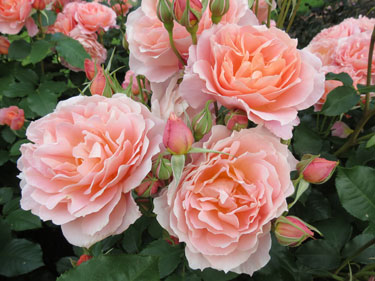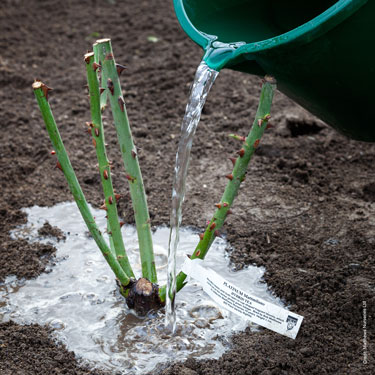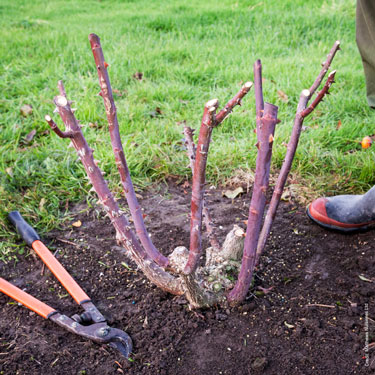Winter rose care
Prepare
In late autumn, stop dead heading and trimming your roses to discourage new growth. Leave the last of the season's flowers on the stem and allow them to form hips (seed pods). The rose bush will think it's done for the season and begin to go dormant. Apply a dressing of sulphate of potash. This will help any new growth to harden before winter.
Remove fallen leaves around your rose bushes to prevent diseases and insects from overwintering in the soil. This is a good time to spray the rose bush and surrounding soil with Lime Sulphur, which controls a range of pests and diseases, plus moss and lichen. Do not use lime sulphur and copper based sprays within 2 weeks of each other.
New rose bushes can be purchased in June but before then, prepare the planting site with deep digging and plenty of rich compost. The site should be sunny for at least half a day without competition from large trees or shrubs.
Check you pruning gear. You will need clean, sharp secateurs and possibly a lopper or pruning saw for large roses. A wire brush is handy to remove flaky bark on mature plants. Thick prickle resistant gloves are essential.
Purchase
Roses are a long-term investment in flowers and fragrance, so choose only quality plants. Roses are offered for sale as either bare-root plants in bags, or potted in soil in planter bags or pots. Choose your bushes carefully to get those that have 3 or more strong, undamaged canes. Keep them well watered until you can plant them.
Note, new rose bushes have not been pruned correctly, but mechanically trimmed for ease of handling and transportation. Prune each branch near the top, just above a bud.
Plant
Don ’t worry if you didn ’t manage to prepare a planting spot before now. You can give your roses a good start by digging a hole enriched with compost that is large enough so the roots are not squashed or bent. This is the one chance to add a slow-release fertiliser underneath the bush by sprinkling in a handful of food.
Trim any damaged roots with secateurs. Position the plant in the hole with the crown (bud union) sitting at ground level. Fill the hole with soil, filling the gaps between the roots to remove any air pockets and firm in with your boots.
Your new roses need plenty of water. Soak the roots in a bucket of water for 30 minutes before planting. Apply a full 10L bucket of water after planting, and again every day for the next week.
Prune
Roses respond well to a good prune in winter, between June and August, while they are dormant. Don ’t worry about cutting back too much. Roses are resilient! When pruned the plant will look smaller and bare but will strengthen and re-establish quickly in spring.
Start with the four ‘D ’s ’ – remove any dead, dying, damaged and diseased stems. Also remove shoots that are crossed and tangled, and anything slimmer than a pencil which will not produce flower buds.
Prune the remaining branches by a third to half, just above an outward facing bud. On older plants, use a wire brush on the crown to remove lichen and moss, and old flaky bark. This will also stimulate the growth of new shoots.
Clean away any old leaves and prunings and follow up with a post prune spray of FreeFlo Copper and Enspray 99 spraying oil to complete the job. This combination will help reduce fungal spores and over-wintering pests, and protect the new pruning cuts from infection.

15-Jun-2022

Rose 'My Mum'

Planting a new rose

A correctly pruned rose

Rose 'Champagne Breakfast'

